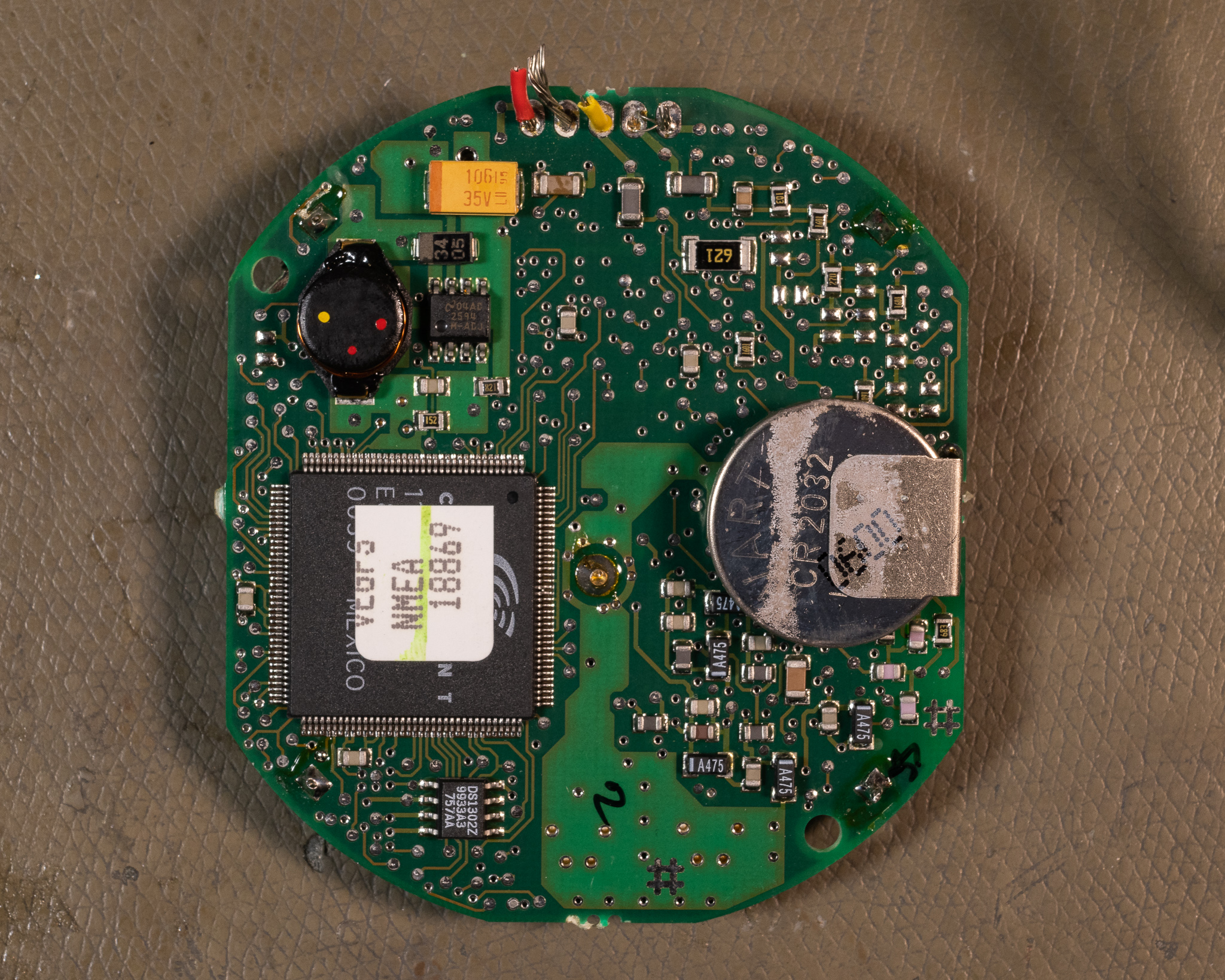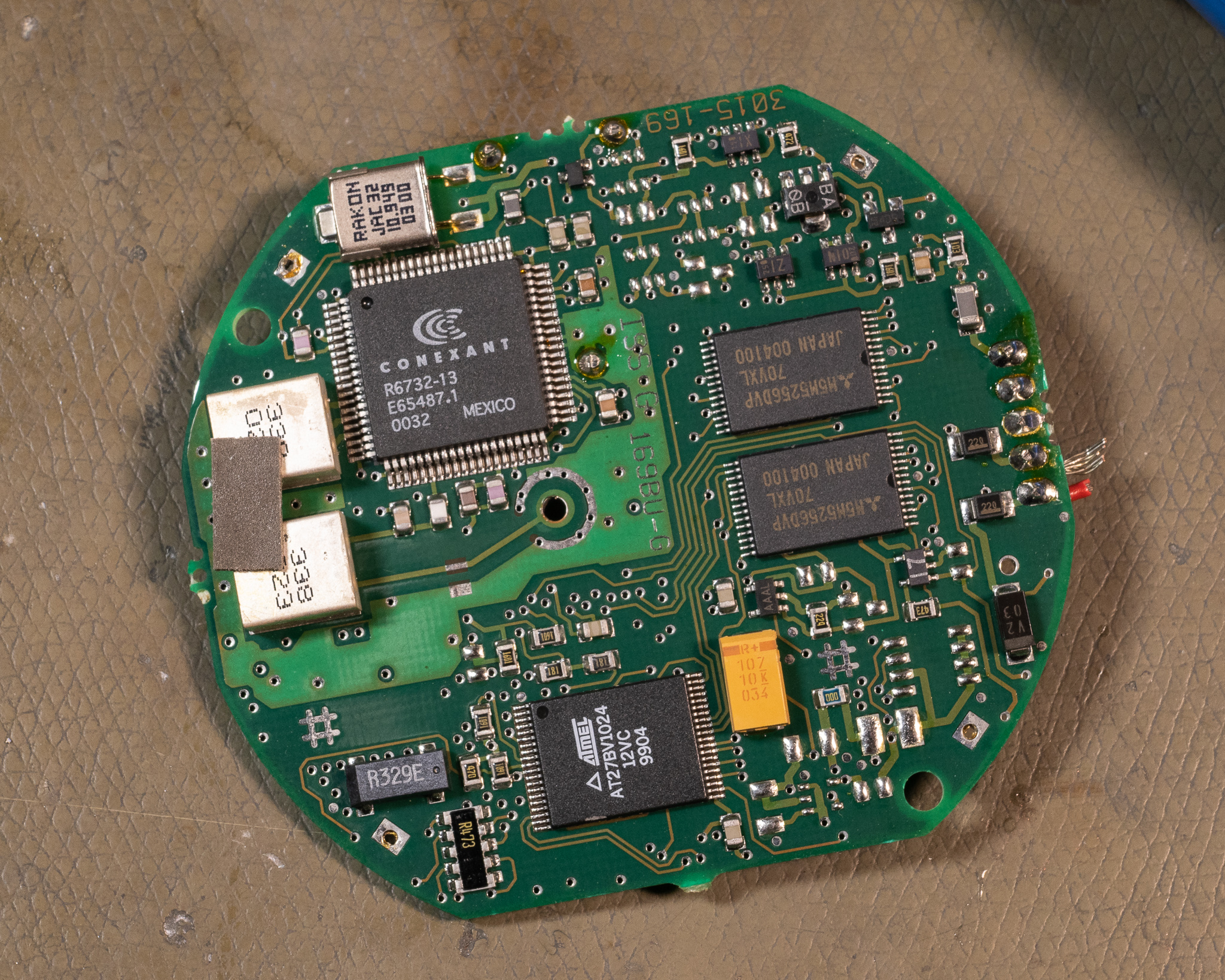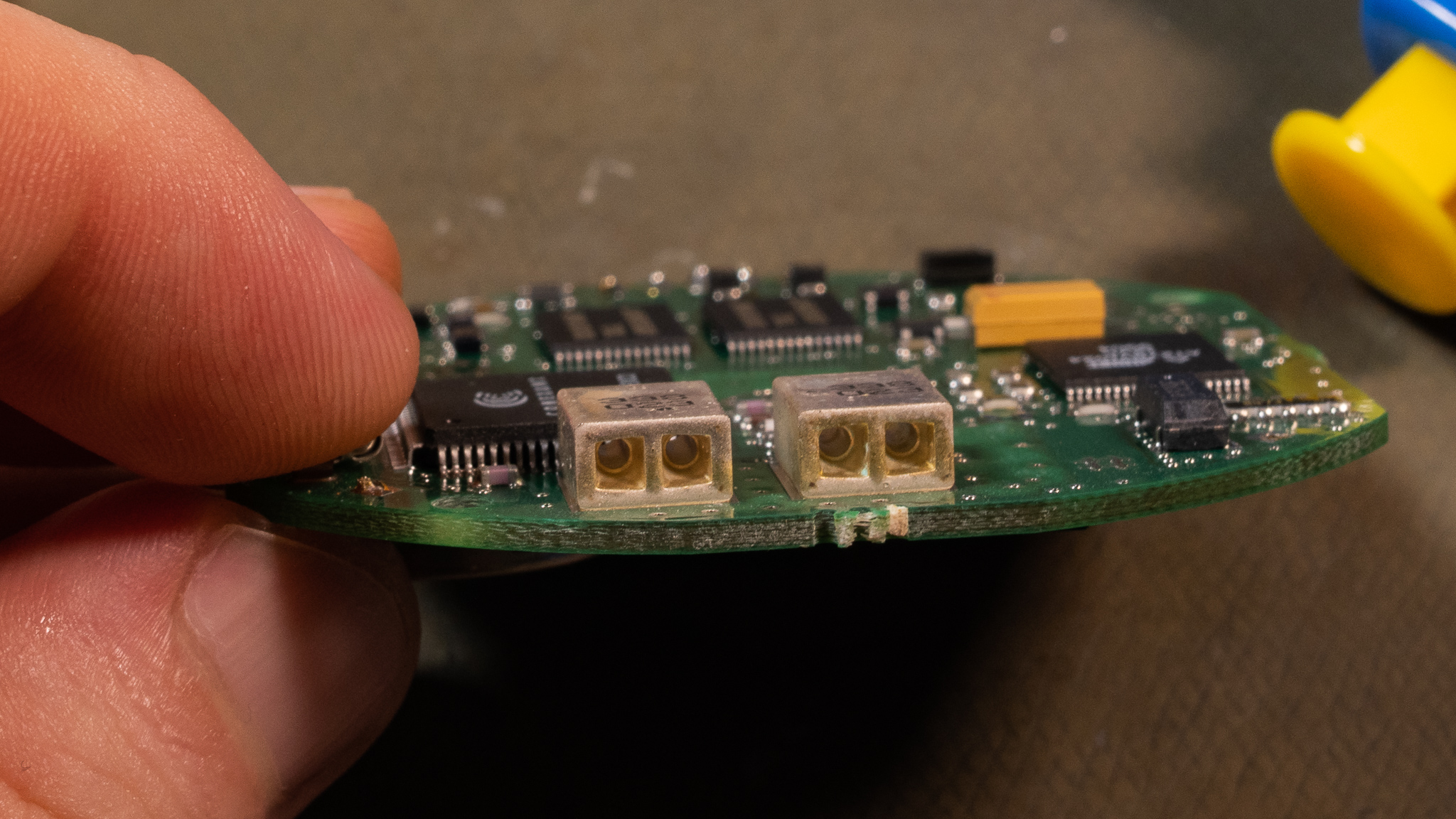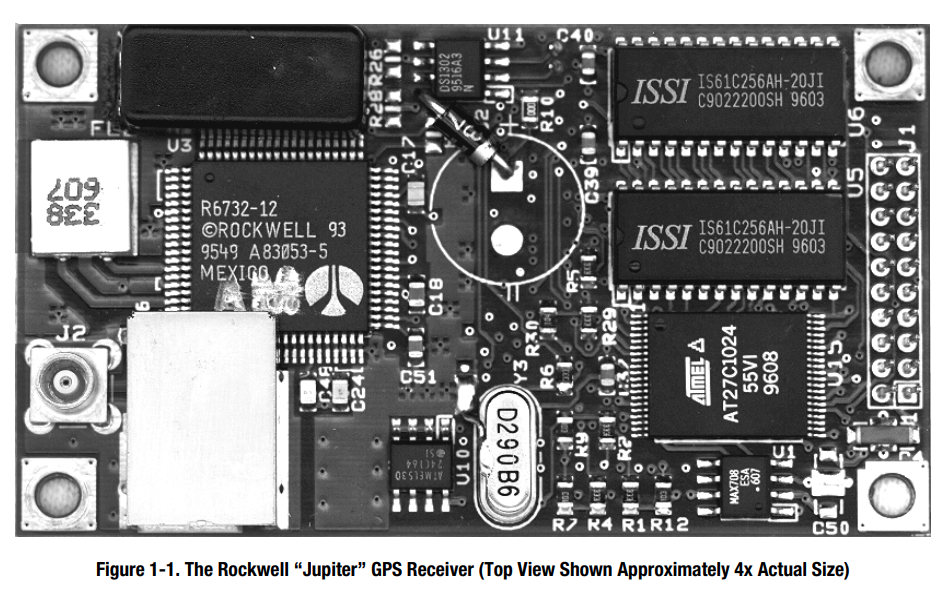
Late 90's Raytheon GPS Receiver
I found a late 90's GPS receiver made by Raytheon, let's take a look.
I unfortunately didn't get any pictures of the radome, it was a white puck around the size of a hockey puck, with a long white wire coming out of it.
Overview

The antenna is quite large and made by Pulse - it sits quite a bit higher than the PCB as compared to more modern designs.

The other side has a soldered in battery, a switch mode power supply, a big mystery chip made by now defunct manufacturer Conexant (formerly defunct manufacturer Rockwell), and a DS1302Z RTC made by Dallas (now Maxim Integrated (now Analog Devices)).
The RTC is still in production, and has a built in trickle charger - presumably there's a series diode somewhere since that CR2032 isn't rechargeable. It also has some S-RAM so it's possible they store parts of the almanac in there as well.
The big chip we'll get back to later.
Pulling off the shielding and antenna reveals more Conexant, and a relatively highly integrated RF signal chain.

The Conexant R6732-12 we'll also look at more later.
A 10.949 MHz crystal sits near the top, and some flash and SRAM for the other Conexant chip is visible.

We can see that the antenna goes right into what looks like a dielectrical resonator band pass filter, with two stages. These are not as common these days (largely replaced by SAW filters), but they were common in the 80's and 90's especially for mobile telephone filtering.
I think the second filter is an output after the first LNA, given it has identical markings.
Analysis
The part numbers in here quickly led to this site: http://yona_n.tripod.com/gps/gps-survey.html
Which seems to be a relatively old list of GPS receiver tech specs, they also have a set of old documents here https://www.gpskit.nl/downloads-en.htm
Looking at the Zodiac designer's guide we can note some similarities.
The Conexant 11577-11 is also known as the "Scorpio Baseband Processor" and was also used in the Rockwell Zodiac 2000 receiver.
The R6732-12 is apparently the Gemini/Pisces Monopac™, presumably a combination of two earlier chips that handle the RF and digitization of the GPS signal. Gemini is the RF front end chip, and Pisces is the ADC.
It seems this stuff was designed around 1995-1996, based on the documentation, even though our unit was made around 2000.

The Rockwell Jupiter GPS receiver shown above is remarkably similar in construction, but not form factor. The Raytheon version is more or less round round, a far superior form factor.
We find from the specs of the Jupiter that it's a 12-channel receiver, not terrible for the time. The contemporary Motorola OnCore receiver was only 8 channel.
For that matter a modern single system receiver is rarely more than 16-channel, and the only points in having more receivers there is to support SBAS/QSZZ reception, which is a relatively modern addition.

We can note that the receiver is in principle capable of accepting RTCM DGPS data, though our specific unit seems to lack the second serial port to input data.
RTCM/Long Wave DGPS is basically only used for marine vessels these days, like LORAN it has it's charm and I'd like to see it used more. Modern DGNSS implementations apparently support multi-system/multi-band GNSS!
I should also note that RTCM is also commonly used with "RTK" systems with a fixed/semi-fixed base station and a short range radio link. Basically your surveyors type DGPS system.
In summary it looks like this old receiver is basically a repackaged Jupiter receiver with a waterproof enclosure.
Performance for the time was likely fine, 25-50 meters CEP and around 100-200 meters 3D accuracy. The sensitivity specification is basically unchanged compared to modern L1 receivers.
At the time selective availability was still in effect so specification were quite conservative.